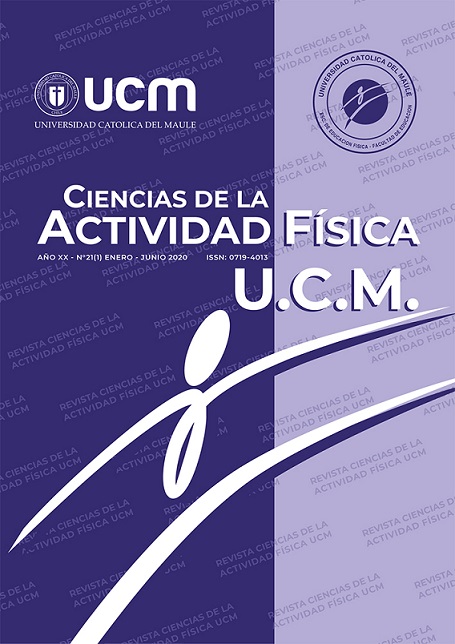Donghoon Kang, T. O. (2019). Comparison of the muscle activity in the normal and forward head postures based on the pressure level during cranio-cervical flexion exercises. The Journal of Korean Physical Therapy 31(1), 1-6. DOI: https://doi.org/10.18857/jkpt.2019.31.1.1
Fathollahnejad, K., Letafatkar, A., & Hadadnezhad, M. (2019). The effect of manual therapy and stabilizing exercises on forward head and rounded shoulder postures: A six-week intervention with a one-month follow-up study. BMC Musculoskeletal Disorders, 20(1), 1-8. DOI: https://doi.org/10.1186/s12891-019-2438-y
Gupta, B., Aggarwal, S., Gupta, B., Gupta, M., & Gupta, N. (2013). Effect of deep cervical flexor training vs. conventional isometric training on forward head posture, pain, neck disability index in dentists suffering from chronic neck pain. Journal of Clinical and Diagnostic Research, 7(10), 2261-2264. DOI: https://doi.org/10.7860/JCDR/2013/6072.3487
Haider, S., Luger, E., Kapan, A., Titze, S., & Lackinger C. (2016). Associations between daily physical activity Associations between daily physical activity, handgrip strength, muscle mass, physical performance and quality of life in prefrail and frail community-dwelling older adults. Qual Life Res, (25)3129-3138. DOI: http://doi.org/10.1007/s11136-016-1349-8
Hanney, W. J., George, S. Z., Kolber, M. J., Young, I., Salamh, P. A., & Cleland, J. A. (2014). Interrater reliability of select physical examination procedures in patients with neck pain. Physiotherapy Theory and Practice, 30(5), 345-352. DOI: https://doi.org/10.3109/09593985.2013.870267
Harman, K., Hubley-Kozey, C. L., & Butler, H. (2010). Effectiveness of an Exercise Program to Improve Forward Head Posture in Normal Adults: A Randomized, Controlled 10-Week Trial. Journal of Manual & Manipulative Therapy, 13(3), 163-176. DOI: https://doi.org/10.1179/106698105790824888
Jack, K., Mairi, S., Klaber, J., & Gardiner, E. (2010). Barriers to treatment adherence in physiotherapy outpatient clinics : a systematic review. Manual Therapy, 15(3), 220-228. DOI: https://doi.org/10.1016/j.math.2009.12.004
Jessen, J. D., & Lund, H. H. (2017). Study protocol: effect of playful training on functional abilities of older adults - a randomized controlled trial. BMC Geriatrics, 17(1), 1-7. DOI: https://doi.org/10.1186/s12877-017-0416-5
Johnson, G., & Phty, D. (1998). The correlation between surface measurement of head and neck posture and the anatomic position of upper cervical vertebrae. Spine, 23(8), 921–927. DOI: 10.1097/00007632-199804150-00015
Kim, D. H., Kim, C. J., & Son, S. M. (2018). Article history: Neck Pain in Adults with Forward Head Posture: Effects of Craniovertebral Angle and Cervical Range of Motion Osong Public Health and Research Perspectives. Public Health Res Perspect, 9(6), 309-313. DOI: https://doi.org/10.24171/j.phrp.2018.9.6.04
Kojima, G., Taniguchi, Y., Kitamura, A., & Fujiwara, Y. (2020). Is living alone a risk factor of frailty? A systematic review and meta-analysis. Ageing Research Reviews, (59), 101048. DOI: https://doi.org/10.1016/j.arr.2020.101048
Mahmoud, N. F., Hassan, K. A., Abdelmajeed, S. F., Moustafa, I. M., & Silva, A. G. (2019). The Relationship Between Forward Head Posture and Neck Pain: a Systematic Review and Meta-Analysis. Current Reviews in Musculoskeletal Medicine 12(4), 562-577. DOI: https://doi.org/10.1007/s12178-019-09594-y
Mani, S., Sharma, S., Omar, B., Ahmad, K., Muniandy, Y., & Singh, D. K. A. (2017). Quantitative measurements of forward head posture in a clinical settings: a technical feasibility study. European Journal of Physiotherapy, 19(3), 119-123. DOI: https://doi.org/10.1080/21679169.2017.1296888
Morse, L. A., Xiong, L., Ramirez-Zohfeld, V., Anne, S., Barish, B., & Lindquist, L. A. (2018). Humor doesn’t retire: Improvisation as a health-promoting intervention for older adults. Archives of Gerontology and Geriatrics, (75) 1-5. DOI: https://doi.org/10.1016/j.archger.2017.10.013
Salahzadeh, Z., Maroufi, N., Ahmadi, A., Behtash, H., Razmjoo, A., Gohari, M., & Parnianpour, M. (2014). Assessment of forward head posture in females: Observational and photogrammetry methods. Journal of Back and Musculoskeletal Rehabilitation, 27(2), 131-139.
Sheikhhoseini, R., Shahrbanian, S., Sayyadi, P., & O’Sullivan, K. (2018). Effectiveness of Therapeutic Exercise on Forward Head Posture: A Systematic Review and Meta-analysis. Journal of Manipulative and Physiological Therapeutics, 41(6), 530-539. DOI: https://doi.org/10.1016/j.jmpt.2018.02.002
Shiravi, S., Letafatkar, A., Bertozzi, L., Paolo, P., & Khaleghi Tazji, M. (2019). Efficacy of Abdominal Control Feedback and Scapula Stabilization Exercises in Participants With Forward Head, Round Shoulder Postures and Neck Movement Impairment. Sports Health: A Multidisciplinary Approach, 11(3), 272-279. DOI: https://doi.org/10.1177/1941738119835223
Szczygieł, E., Sieradzki, B., Masłoń, A., Golec, J., Czechowska, D., Węglarz, K., … Golec, E. (2019). Assessing the impact of certain exercises on the spatial head posture. International Journal of Occupational Medicine and Environmental Health, 32(1), 43-51. DOI: https://doi.org/10.13075/ijomeh.1896.01293
Wickstrom, B. M., Oakley, P. A., & Harrison, D. E. (2017). Non-surgical relief of cervical radiculopathy through reduction of forward head posture and restoration of cervical lordosis: a case report. Journal of Physical Therapy Science, 29(8), 1472-1474. DOI: https://doi.org/10.1589/jpts.29.1472


 http://orcid.org/0000-0002-8672-4987
http://orcid.org/0000-0002-8672-4987
